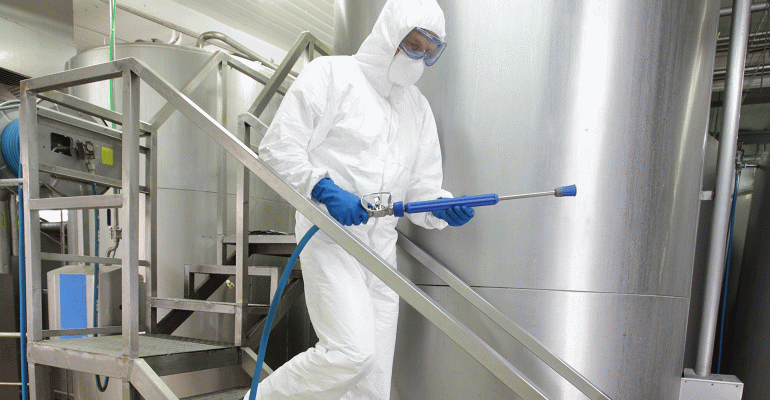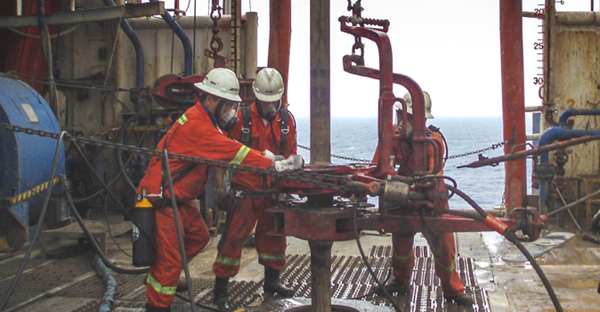
Q: What is the Difference between Process shutdown and Emergency Shutdown?
A: Process shutdown (PSD) is defined as the automatic isolation and the activation of all parts of a process. During a PSD the process remains pressurized.
Basically, PSD consist of field mounted sensors. Valves and trip relays, a system logic unit for processing of incoming signals, alarm, and MHI units. The system is able to process all input signals and activating output in accordance with the applicable cause and effect matrix chart
Typical action from PSD systems are:
1. Shutdown the whole process
2. Shutdown part of the process
3. Depressurize/Blowdown parts of the process
The Emergency Shutdown (ESD) shall minimize the consequences of emergency situations, related to typically uncontrolled flooding, escape of hydrocarbons, or outbreak of fire in hydrocarbon carrying areas or areas which may otherwise be hazardous. Traditionally risk analyses have concluded that the ESD system is in need of a high Safety Integrity Level, typically SIL 2 or 3.
Basically, the system consists of field-mounted sensors, valves, and trip relays, system logic for processing of incoming signals, alarm, and HMI units. The system is able to process input signals and activating outputs in accordance with the Cause & Effect charts defined for the installation.
ESD can be automatically initiated by load shedding functions or manually by the operator through a push button on the panel. ESD will shutdown and isolate all designated process-related equipment, including inlet and outlet ESD valves. Depends on each project some plants will allow the power generation, utilities, and fuel gas system to keep running during this condition.
Typical action from the ESD system are:
- The shutdown of part system and equipment
- Isolate hydrocarbon inventories
- Isolate electrical equipment
- Prevent escalation of the event
- Stop hydrocarbon flow
- Depressurize/Blowdown parts of the process
- Emergency ventilation control
- Close watertight doors and fire doors
PSD vs ESD
Process shutdown (PSD) system is a part of the plant (facility) safeguarding system with a purpose to minimize the frequency and consequences of excursions outside the facility operating envelope.
The emergency shutdown (ESD) system is a part of the plant (facility) safeguarding system with a purpose to keep the process within the design envelope and to prevent the escalation of abnormal conditions into a major hazardous event.
PSD and ESD can be considered as effects, which are triggered by certain causes, the PSD and ESD are levels of a shutdown which discriminate between the seriousness of the causes leading to the appropriate effects.
Other Recent Questions
- Free Download Common Firefighter Job Interview Questions and Answers
- High Rise Fire Safety Questions and Answers
- Scaffold Safety self Audit and checklist
- HSE Interview Questions and Answers for Oil and Gas
- Q& A: Which is better Cast Iron or concrete counterweight in the tower crane? and What is the purpose of a counterweight?
- Top 154 Safety Interview Questions and Answers for successful
- Online Quiz: Top 13 Industrial Safety Objectives Questions
- Q&A: What Does Fire Load Mean? and How do you calculate it?
- HSE Interview Questioners
- Q & A: Do Manual Hoists and Trolleys Require a Load Test after Installation?
- Safety Record keeping
- Is Magnetic Particle Testing required by an OSHA or ASME standard?
- What is the difference between fall protection and fall prevention
- Conventional or Addressable Fire Alarm System?
- Online Quiz: Personal Protective Equipment (PPE)
- 68 HSE Interview Questions
- Online Quiz: Work and home fire safety
- Q & A: What is the Difference between Process shutdown and Emergency Shutdown?
- Interview Questions on Fire Alarm System
- Online Quiz: lightning Safety
- Q & A: What happens if I tie off at the foot level with a personal SRL?
- E-Books: Book of Questions and Answers Safety Health
- Q & A: What kind of gloves are best for stick welding?
- Q & A: Does anyone other than equipment operators need to be trained in lockout/Tagout?
- Work-Related Stress short guide
- How many wheel chocks do should I use per trailer?
- How is wind chill calculated?
- How do cooling towels work?
- What’s an efficient way to account for everyone in the event of an on-site emergency?
- Who should be responsible for rescuing fallen workers?
- When should workers use polarized safety glasses?
- Q & A: What PPE should I use when working at home?
- Q & A: What are the Types of scaffold’s load?
- Coronavirus disease (COVID-19) Questions & Answers
- What procedure should we follow to reactivate equipment that has been locked out?
- What are some of the guidelines around using back support belts in the workplace?
- What is the difference between a hazard and a risk?
- Are nitrile gloves safe?
- Bump Testing Gas Detector 6 Important Questions
- Online Quiz:The Lab Safety Symbols
- Can you wear any pair of earmuffs with a hard hat?
- Online Quiz:Health and Safety Signs
- Online Quiz:Personal Protective Equipment (PPE)
- Online Quiz:Construction Safety -Excavation
- What is Meaning of %LEL , %UEL , PID
- Online Quiz:Ladder safety, Test your self
- Online Quiz:Electrical safety, Test your self
- Fall Protection Systems Quiz Test Your Knowledge
- What is the general safety Rules and apply to whom?
- What can we do about rain protection for arc flash work?
- What is a self-retracting fall protection device?
- What is the difference between primary and secondary spill containment?
- How does dehydration impact workplace safety?
- What is the difference between safety goggles and glasses?
- Safety interview Questions and Answers Part 2
- Safety interview Questions and Answers Part 1




